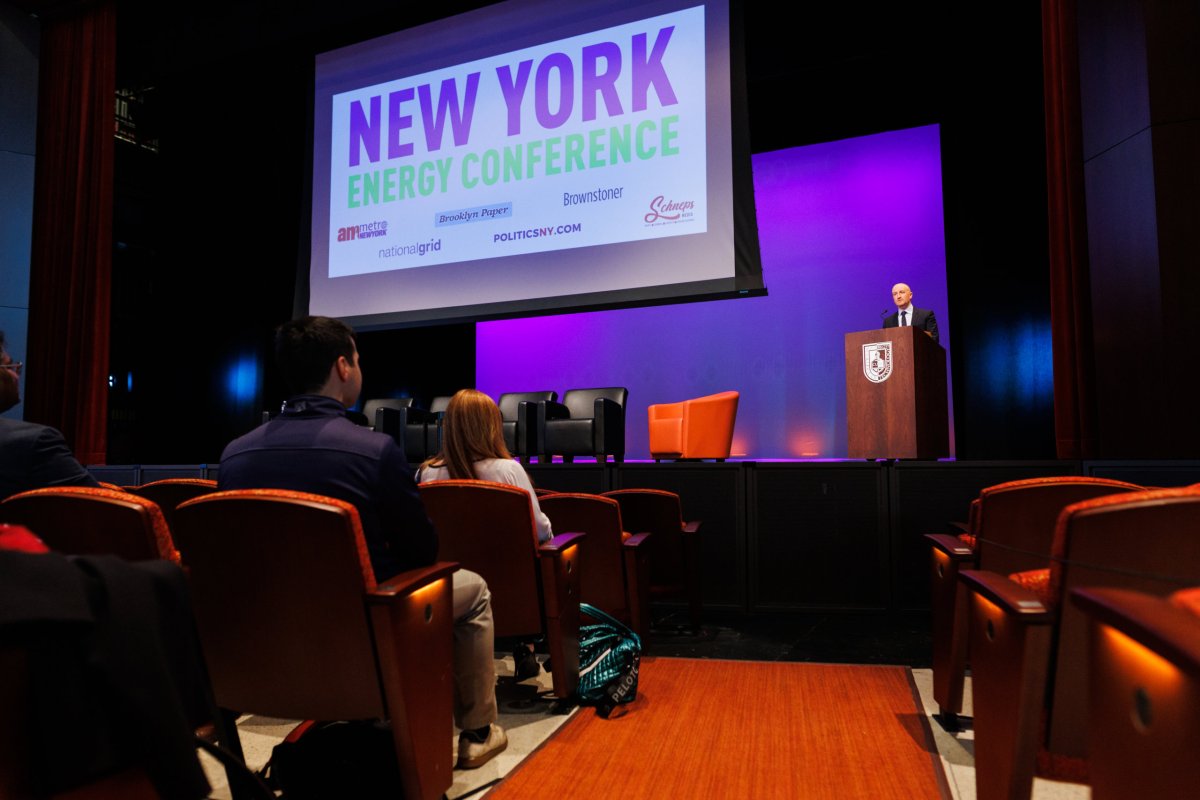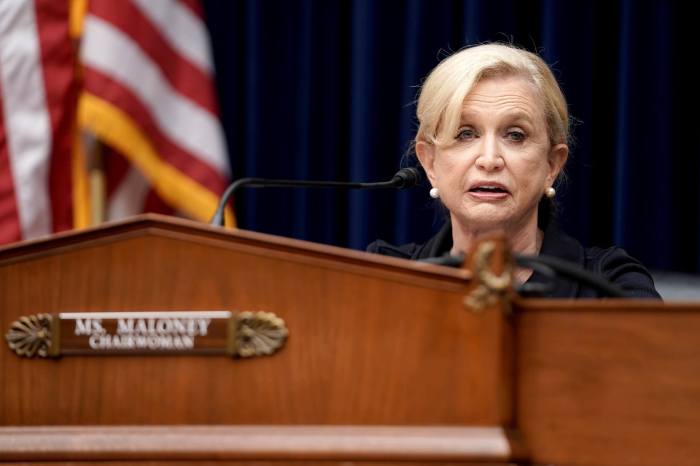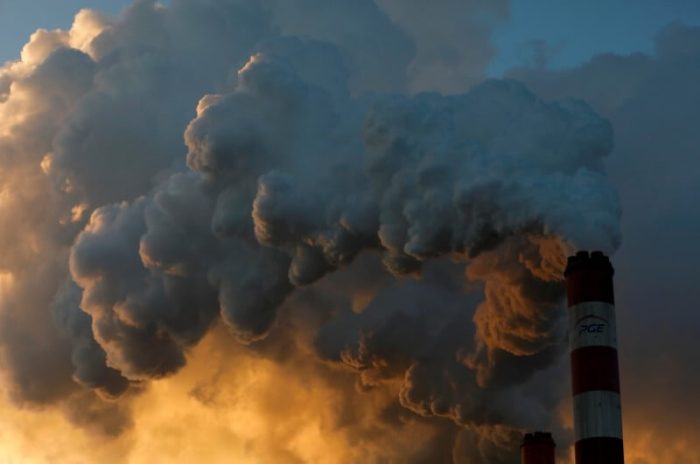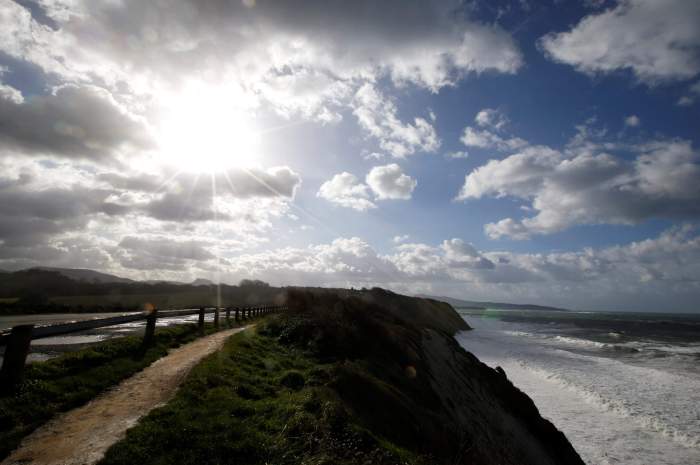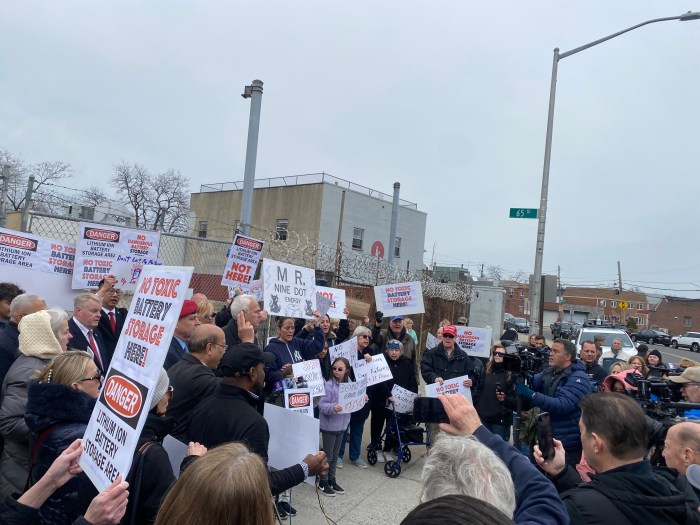Leaders in politics and the energy industry gathered at City Tech on April 27 for the New York Energy Conference hosted by Schneps Media in partnership with National Grid.
The conference included two panel discussions with members of the energy industry, researchers, government officials, advocacy groups, developers, labor leaders and more focused on the future of energy in New York, and the many opportunities for and challenges in creating a green economy here.
“Energy affects all of us here in New York State and around the world and we’re really thrilled to be able to have with us some great industry experts and elected officials, government officials, business and community leaders taking their time to discuss their expertise,” said Schneps Media CEO Josh Schneps. “There are a lot of ideas, and a lot of work that is being done today and we have experts here to share it.”
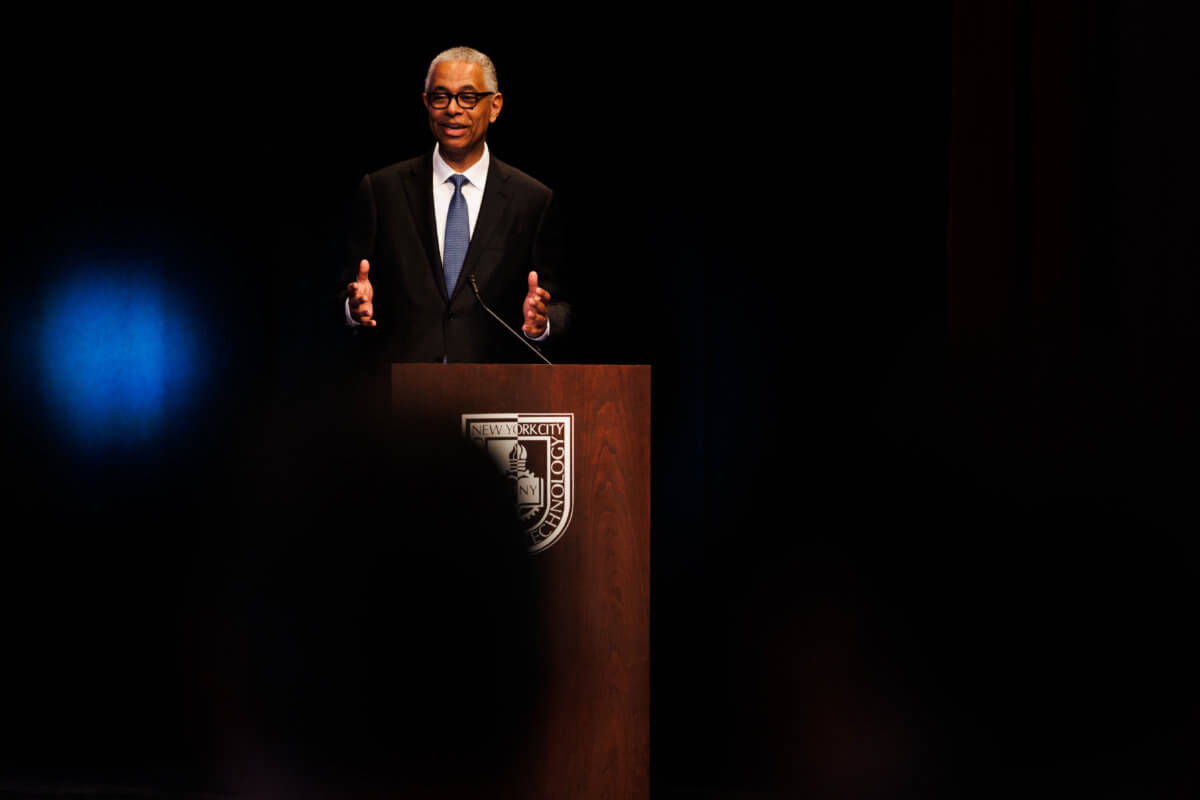
Panelists addressed two major topics — current initiatives and progress for New York’s energy, and its future.
Keynote speakers included National Grid President Rudy Wynter and National Grid Chief Strategy and External Affairs officer Ben Wilson.
For event sponsor National Grid, a multinational utility company that delivers electricity and gas to New York, Massachusetts, and Rhode Island, the end game is clear: “We want a reliable transition that leaves no one behind,” said National Grid President Rudy Wynter in his opening address.
“We need to rise to the challenge because climate change is obviously an existential crisis, but we need to do so by making sure we leave no one behind, making sure that this transition provides the services that every home and business need,” Wynter said, adding that “this conversation couldn’t happen at a better time.”
Last week, the utility company announced a plan to provide fossil fuel free heating across the Northeast by 2050 “with archivable milestones along the way.” The plan is focused on using renewable natural gas and green hydrogen.
In 2019, New York state committed to the world’s most ambitious climate goal when it passed the Climate Leadership and Community Protection Act and created the Climate Action Council Draft Scoping Plan, which laid the groundwork for a 100% zero-emissions electrified economy that stops adding to climate change by 2040.
State agencies and private companies took on the task and, so far, have built hundreds of wind and solar farms to power businesses, vehicles and homes. By law, New York has just eight years to more than double the share of the electricity generated from wind, sun and water to 70 percent, from less than 30 percent today.
According to many of the 10 experts who participated in the New York Energy Conference, the city is not ready to make the shift yet, but the state’s creation of wind energy is highly promising.
Ironically, to accomplish leaving fossil fuels behind, coal and gas are needed.
“The gas network is going through some drastic changes,” said Donald Chahbazbpour, director of regulatory strategy at National Grid’s Future of Heat sector. “Gas will play a critical, integral role in enabling going where we want to go.”
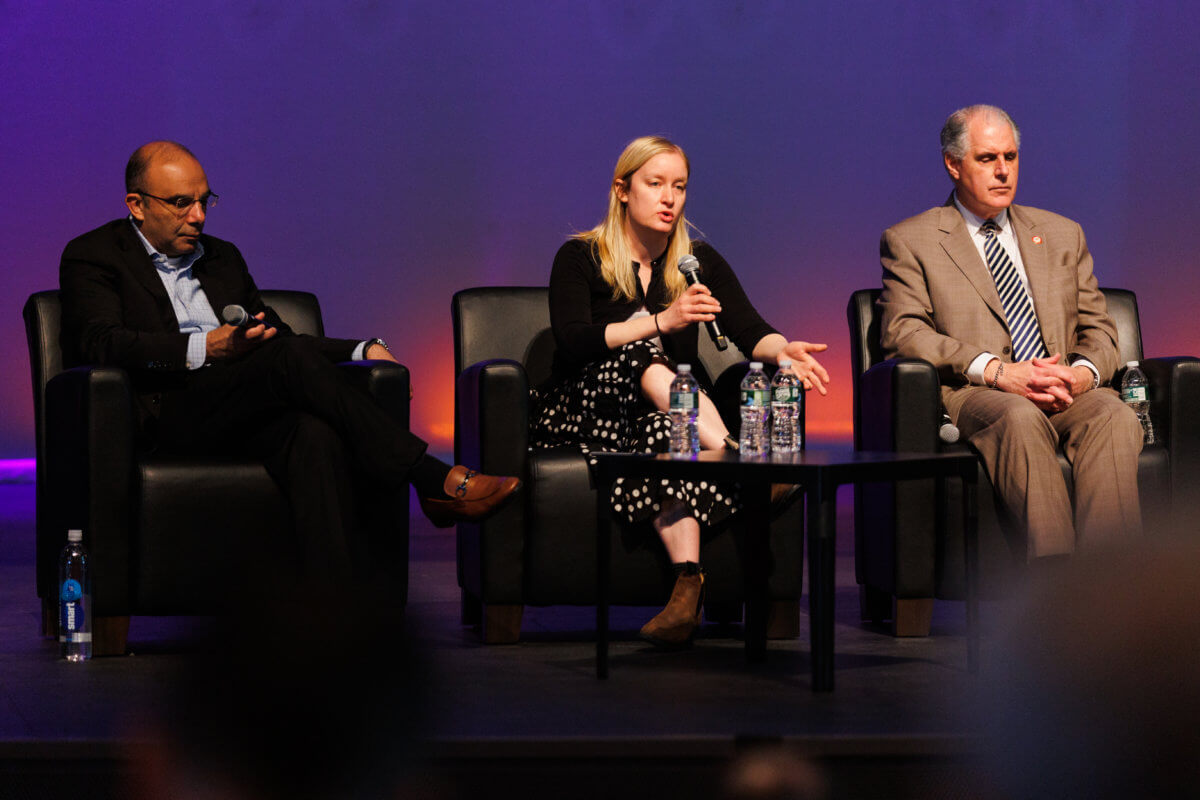
Experts seem to agree that New York’s clean energy future is in the wind.
“New York City is sort of the center of the country for innovation in the [wind power] industry,” said Julie Stein, senior vice president at the New York City Economic Development Corporation, a nonprofit corporation whose stated mission is to “leverage the city’s assets to create good jobs and drive growth, ensuring equitable and sustainable development across all five boroughs.”
According to Stein, this year has gotten off to a great start with two projects that are currently underway. The first is the offshore wind port at the South Marine terminal announced by Mayor Eric Adams in March, which will bring about a third of the total for the state goal offshore wind generation: 3.3 gigawatts out of the night.
The second is a substation for Empire One. In September 2020, British energy giant BP formed a partnership with Equinor to develop offshore wind and announced the acquisition of a 50% non-operating stake in the Empire Wind and Beacon Wind projects being developed off the shores of New York and Massachusetts.
Equinor also committed to establishing a $5 million ecosystem fund to “bring more NYC residents into offshore wind careers, propel offshore wind innovation, and support a just transition.”
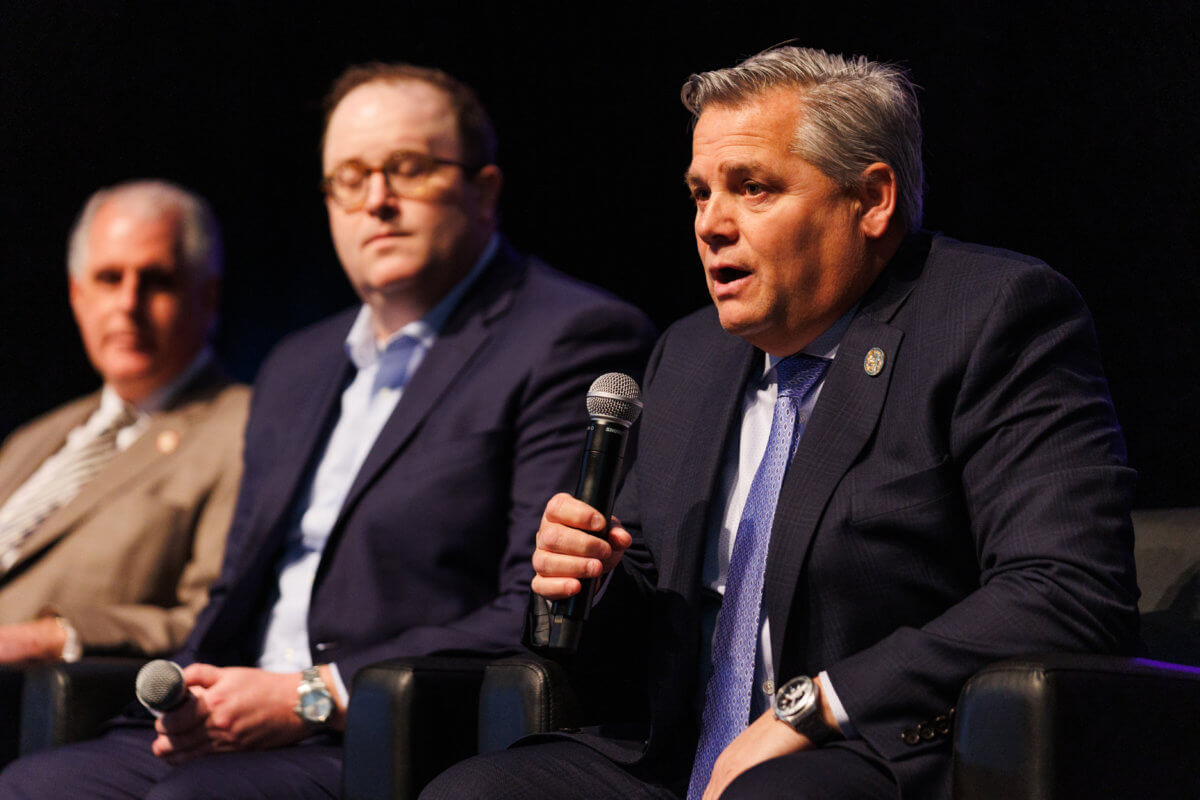
And it’s not just major utility companies that are getting on board. Michael Apuzzo, business manager of Plumbers Union Association Local 1, said that right now, the International Association of Plumbing and Mechanical Officials is working to develop a hydrogen gas code to start development of piping that would facilitate a new, natural blended gas.
“Just like everything else when we started with wind and solar [energy], it took time to develop,” he said, adding that, while the union certainly has licensed plumbers who are trained to install these new pipes (“We’ve been doing this for over 130 years,” he told the crowd), “It just can’t happen as quick as everyone thinks it can.”
Though there are some things that certainly need to be done sooner rather than later, according to the experts.
“We’re in the era of these horrible storms that we had 1.95 inches [of rain] in Central Park — the highest recorded — and then a month later, it was 3 inches,” said James Gennaro, chair of the City Council’s Committee on Environmental Protection. “The city’s infrastructure, in regard to being able to assimilate stone water, the standard for the last 50 years or so has been 1.57 inches per hour — and that’s a lot.”
And though it’s not enough to keep up with changing weather patterns, Gennaro said, there are remedies in the works.
“We just don’t have the ability to replace 7,500 miles of sewer lines with mains that would have [better capacity], that’s just not in the cards so we have to think outside of the box,” he said, adding that, something exciting is coming from the Adams administration and the Department of Environmental Protection. “I don’t want to spill the beans…but there are other ways that we can sequester water so that it doesn’t go into the [sewer] system.”
Speaking on the downside of what to do with end-of-life batteries, Patrick Hanley, chief operating officer of Viridi Parente — a point-of-use energy tech company revolutionizing the way energy is stored and used — said his team has already worked with another company to make recycling batteries more efficient.
“We didn’t want to cause more problems by having [batteries] end up in landfills, so we partnered with a local company, Li-Cycle, that’s able to take end-of-life batteries and recycle them by way that’s about 95% they’re able to reuse.”
This, and other market trends, Hanley said, are “a demonstration” of where we as a city and state need to be right now.
On the topic of what’s next for the city and the state in terms of energy, panelists from all walks of life broke down what that means for everyday New Yorkers.
“When we think about our gas business here in Brooklyn, we think about it in this context: How do we do our part, how do we decarbonize,” said featured speaker Ben Wilson, chief strategy and external affairs officer for National Grid.
While hydrogen is “a great end destination,” Wilson said, it will take time.
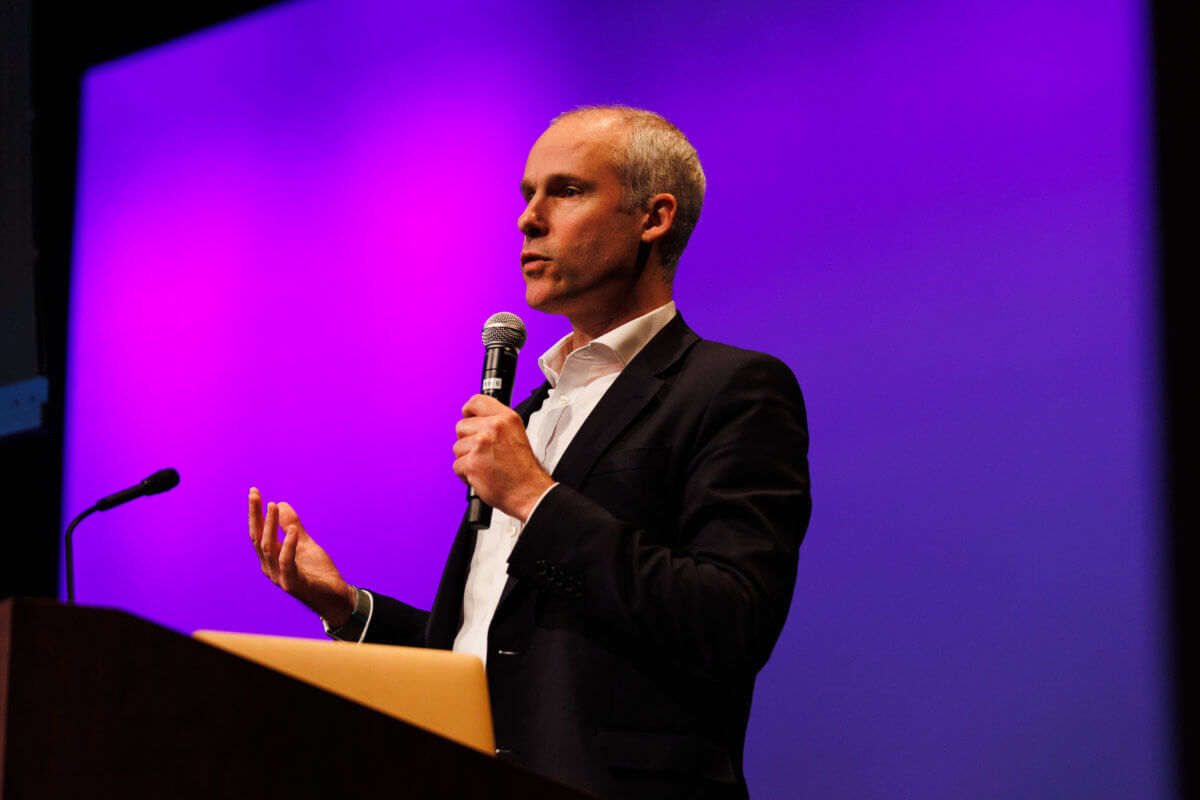
“So in the early stages, the transition will be more focused on renewable natural gas,” he told the crowd. “Agricultural waste, food waste, landfill, wastewater treatment plants, there are thousands of these installations all over the United States — and they produce a very powerful greenhouse gas. We will capture that and we’ll put it into gas networks and use it as fuel that is carbon-neutral and maybe even carbon-negative.”
NYCEDC submitted a proposal last month for offshore wind programs that are water dependent to utilize the maritime opportunities in the Rossville site on the west shore of Staten Island, a 33-acre site. The project brings with it the promise of new jobs, according to City Council Minority Leader Joe Borelli, who represents the area.
“I think when we talk about generational change, this is gonna be one of the most significant generational changes for maritime purposes on the city’s waterfront, and especially on Staten Island,” the pol said.
When asked if carbon capture — a process that captures carbon dioxide emissions from sources like coal-fired power plants and either reuses or stores it so it will not enter the atmosphere — is achievable, panelist Uzi Dvorkin, an assistant professor at the NYU Tandon School of Engineering, said that though it is vital, there is a need to be realistic as well as optimistic about what we can do to make efforts like this happen.
“Even right now when we have all of these optimistic ideas being put forward, we understand that it’s literally impossible for us to achieve our climate goals without ensuring that there is a sequestration mechanism in place,” Dvorkin said, “and the key bottleneck here is to make sure that this mechanism is scalable and cost-effective.”
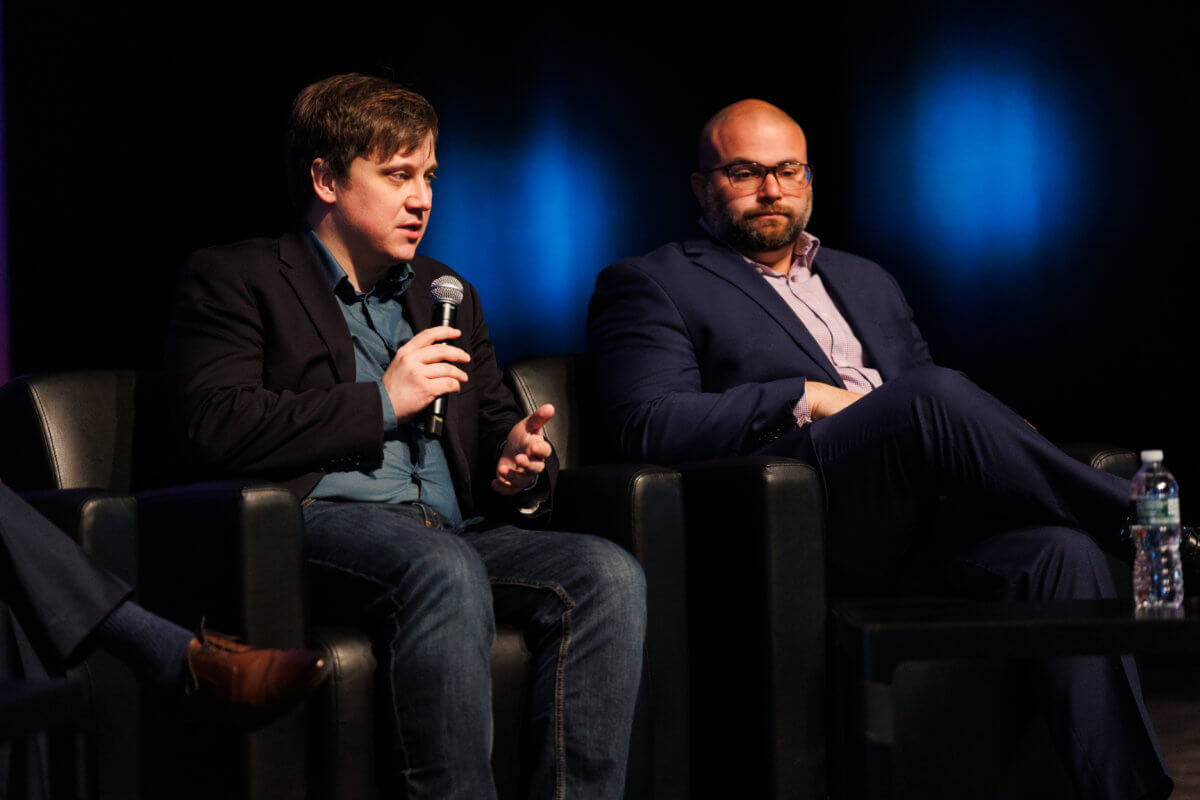
For National Grid, the focus remains on renewable natural gas.
“We are looking at things essentially, green hydrogen,” said Pardhib Kiliti, director of technology and innovation at National Grid.
Also looking to keep green is Dave Lombino, managing director of external affairs at Two Trees Management Co., whose team is working to rebuild the storied Domino Sugar Factory in Williamsburg.
“That new building will be 100% electric,” he said. “It’s something we’re excited about. Overall our entire portfolio, both new residential and commercial properties and our existing stock of early retrofitted industrial buildings that now serve as office buildings, we’ve come to the realization too late that we need to be cutting edge, and we need to be decarbonizing our buildings.”
It’s all about being open to new technologies, he said, adding that he learned a lot at the Schneps’ conference — and that someday soon, he hopes Two Trees’ entire fleet can be the best it can be for the environment.
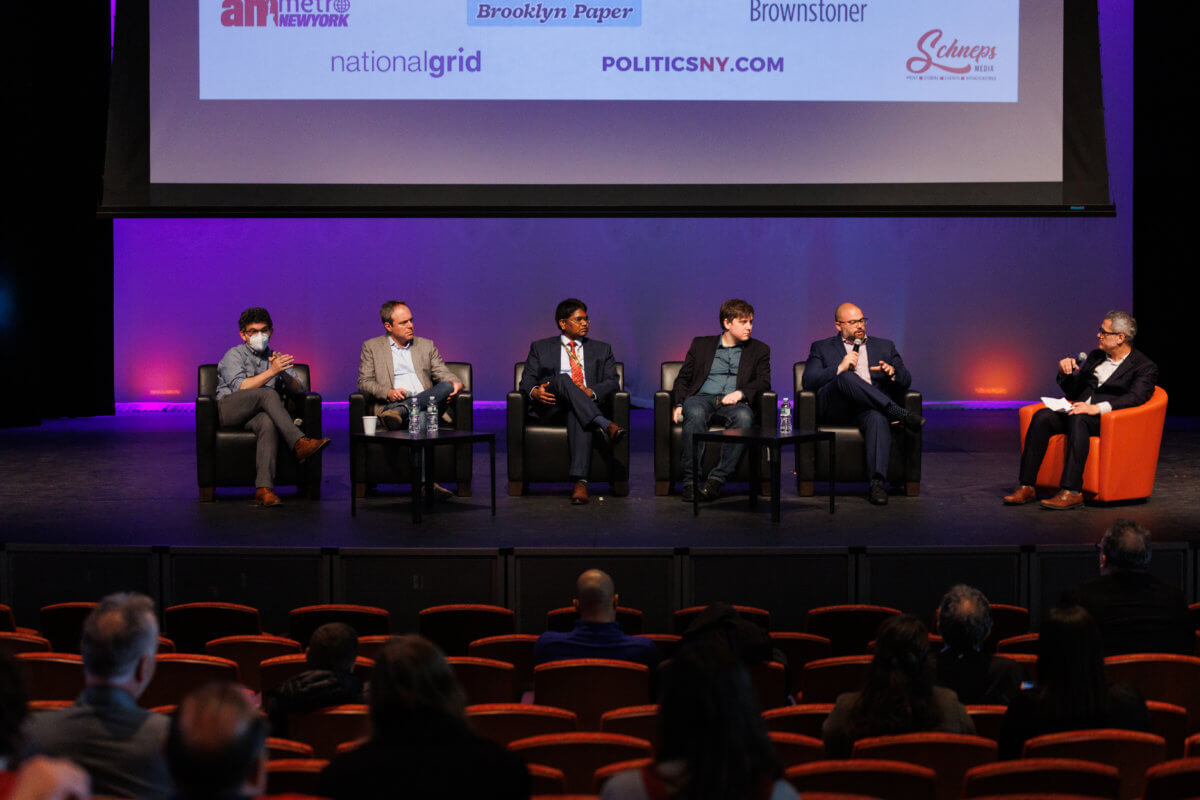
North Brooklyn Councilmember Lincoln Restler echoed a need for sustainability, especially in his District 33.
“Ours is a waterfront district, so we are anxious about being deluged by that next big storm,” said Restler, who released a roadmap for climate neutrality in his run for election and plans to release an updated plan soon. “We stretch from Gowanus all the way up to Greenpoint on the East River waterfront and we’re trying to put out a tangible plan for the action we can take in our district to make ours a model in the fight against climate change.”
“I think if we wait for Washington or some national agreement to come in to save the day, it’s gonna be too late,” Rester added. “We need to take action now.”
Watch the full conference below:



